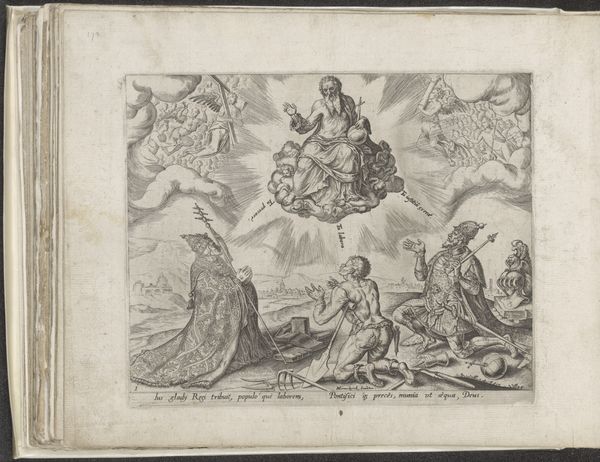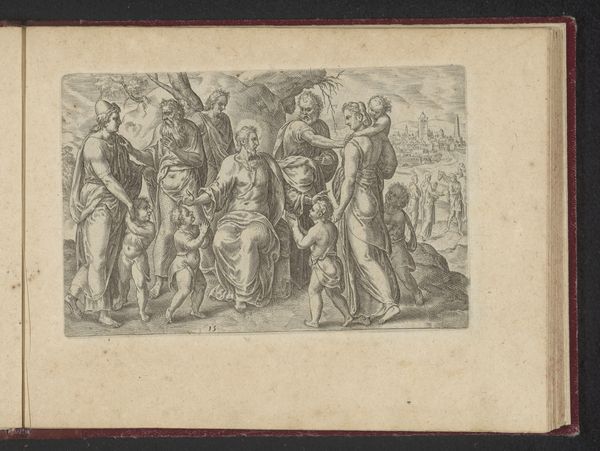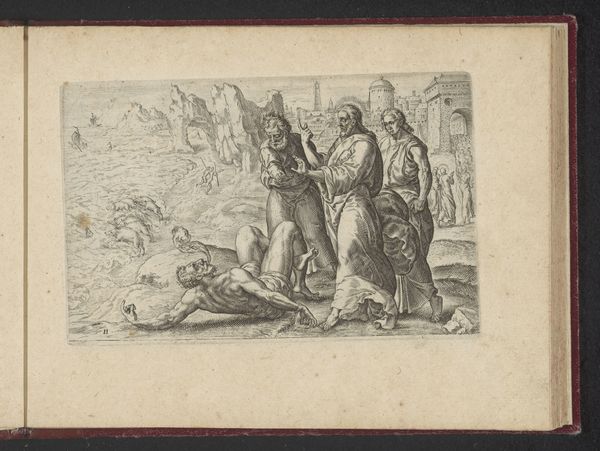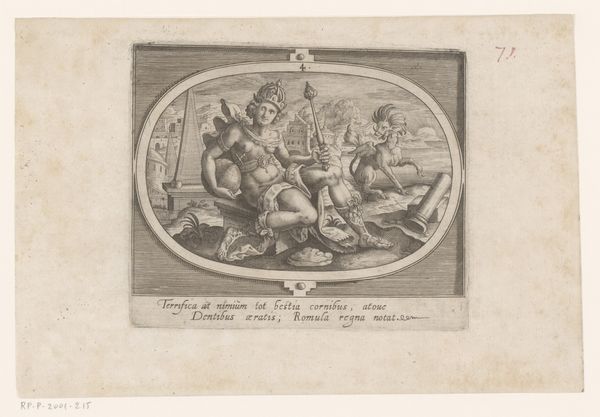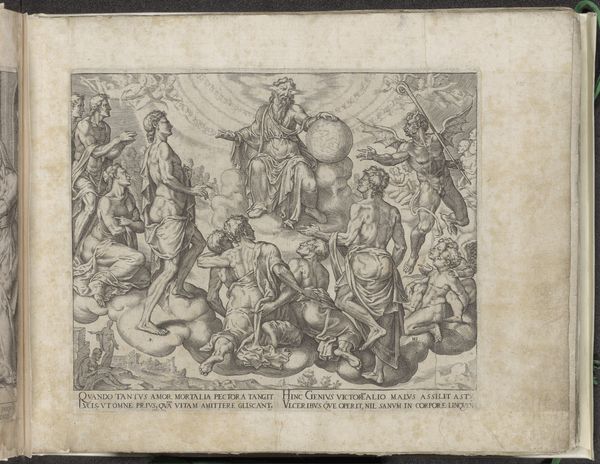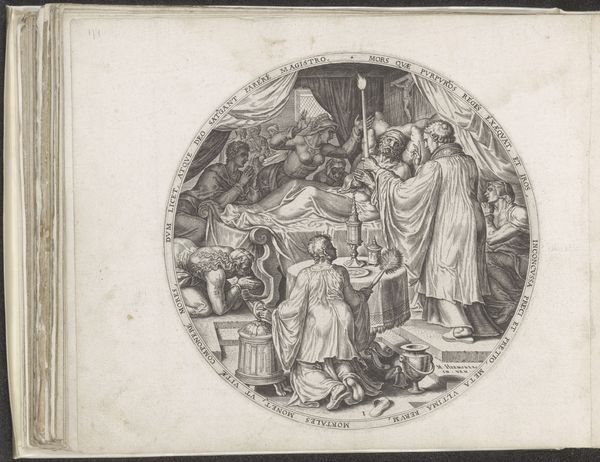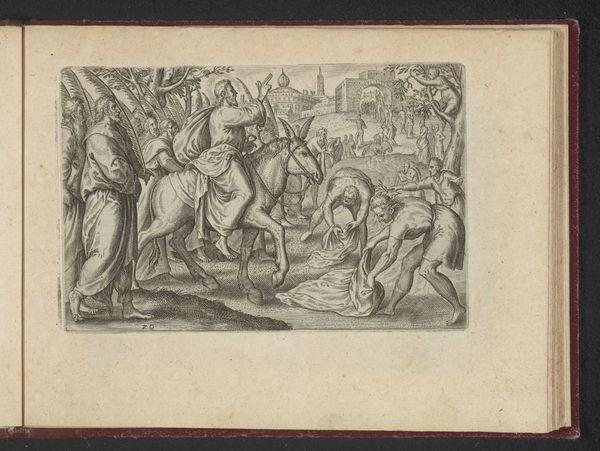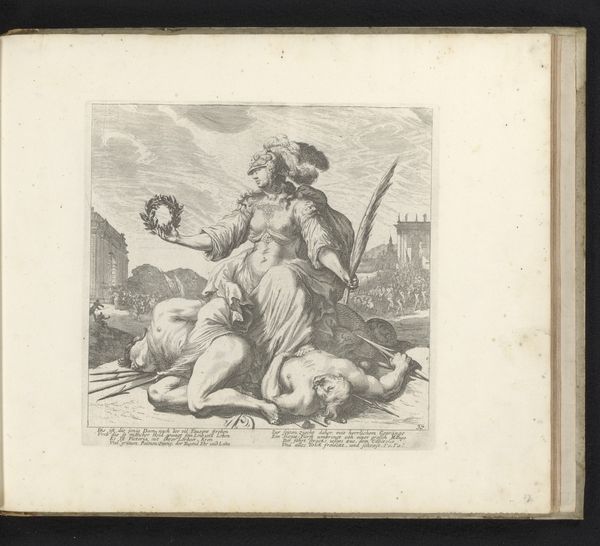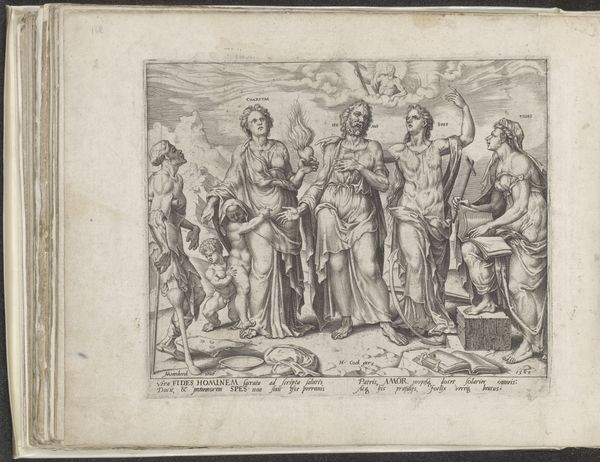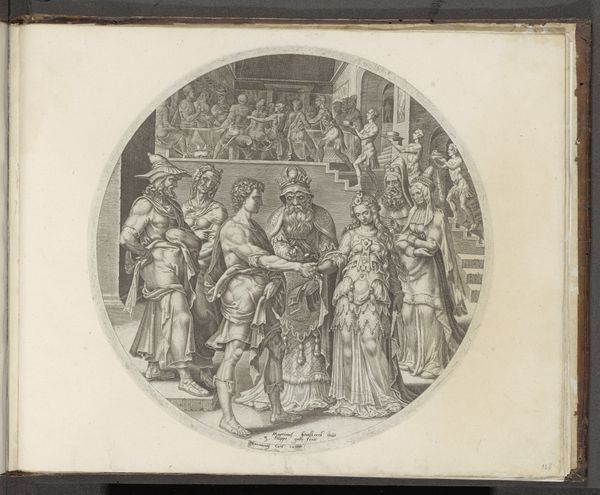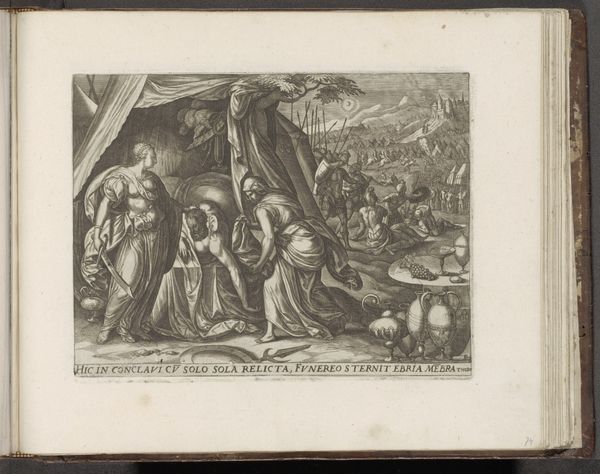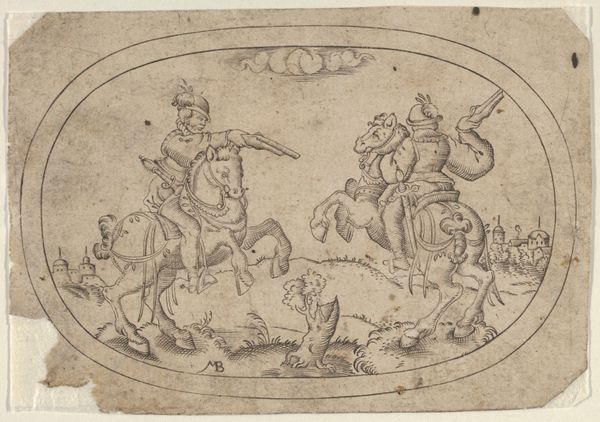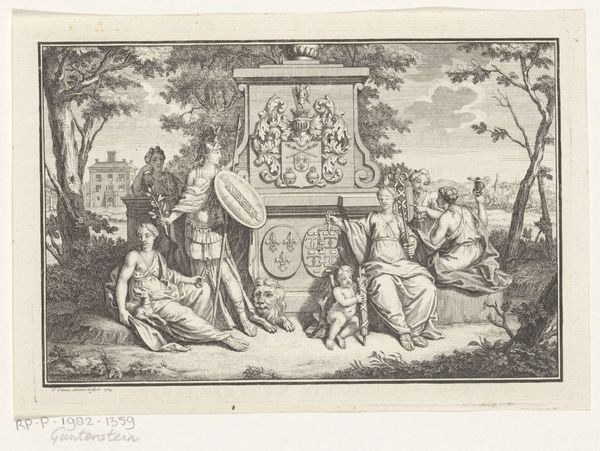
print, engraving
#
allegory
# print
#
mannerism
#
figuration
#
history-painting
#
engraving
Copyright: Rijks Museum: Open Domain
Philips Galle made this engraving, "Last Judgement," sometime between 1557 and 1612. Engraving is an indirect process; the artist incises lines into a metal plate, which is then inked and printed onto paper. The real skill here is not just in the drawing, but in the artist's capacity to cut lines that will hold ink, and print cleanly. Notice the extraordinary level of detail, achieved with many tiny cuts. Look closely, and you can see how the cross-hatching defines volume and shadow, giving a sense of depth to the image. The material properties of the metal plate, like its hardness and capacity to take fine lines, are crucial to the overall effect. In Galle's time, printmaking was a vital industry, enabling the widespread distribution of images and ideas. This print, like others, would have taken its place in that larger world of labor, politics, and consumption. Thinking about the immense work involved really gives us a new appreciation for the final product. It is an important reminder that art and craft are not so different.
Comments
No comments
Be the first to comment and join the conversation on the ultimate creative platform.
